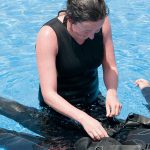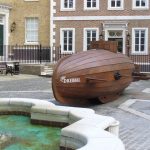The History Of Diving
The History Of Diving
History was probably a boring class for you as it was for me back in elementary school, but when it comes to scuba diving, that´s a different story.
Men’s quest for techniques and devices that could allow us to stay underwater for long periods of time goes as far as 500 B.C. when breath-holding was attempted in old Persia by Scyllis the Greek as part of a military tactic, when Scyllis breathed underwater through a primitive snorkel to run away from his enemies that took him prisoner. He also managed to sabotage his enemies’ ships using the same technique. After that, the list of attempts made by men to achieve the same goal is long.
Let´s remember some of the most relevant to mankind: In 1650 Von Guericke invented the first effective air pump, that Boyle himself used for his experiments on compression and decompression, which are very useful on modern scuba diving.
In 1690 Edmund Halley patented a diving bell which is connected by a pipe to weighted barrels of air that can be refilled from the surface.
In 1776 the history records the first attack by a military submarine. On 1825 William James invented the first workable full-time SCUBA (self contained underwater breathing apparatus). In 1912 the tables developed and tested by the U.S. Navy were published by Boycott, Damant and Haldane. In 1943 the aqua-long is invented by Jacques Cousteau and Emil Gagnan. In 1959, the YMCA pioneers the first nationally organized scuba course for certification. In 1960, after accident numbers grew among scuba-divers, the first national training agencies are formed. In 1966 PADI (Professional Association of Diving Instructors) is created and trains 3226 divers in its first year of operation.
Nowadays, PADI remains as the lead institution in the world that standardized the proceedings and techniques to train divers properly.






